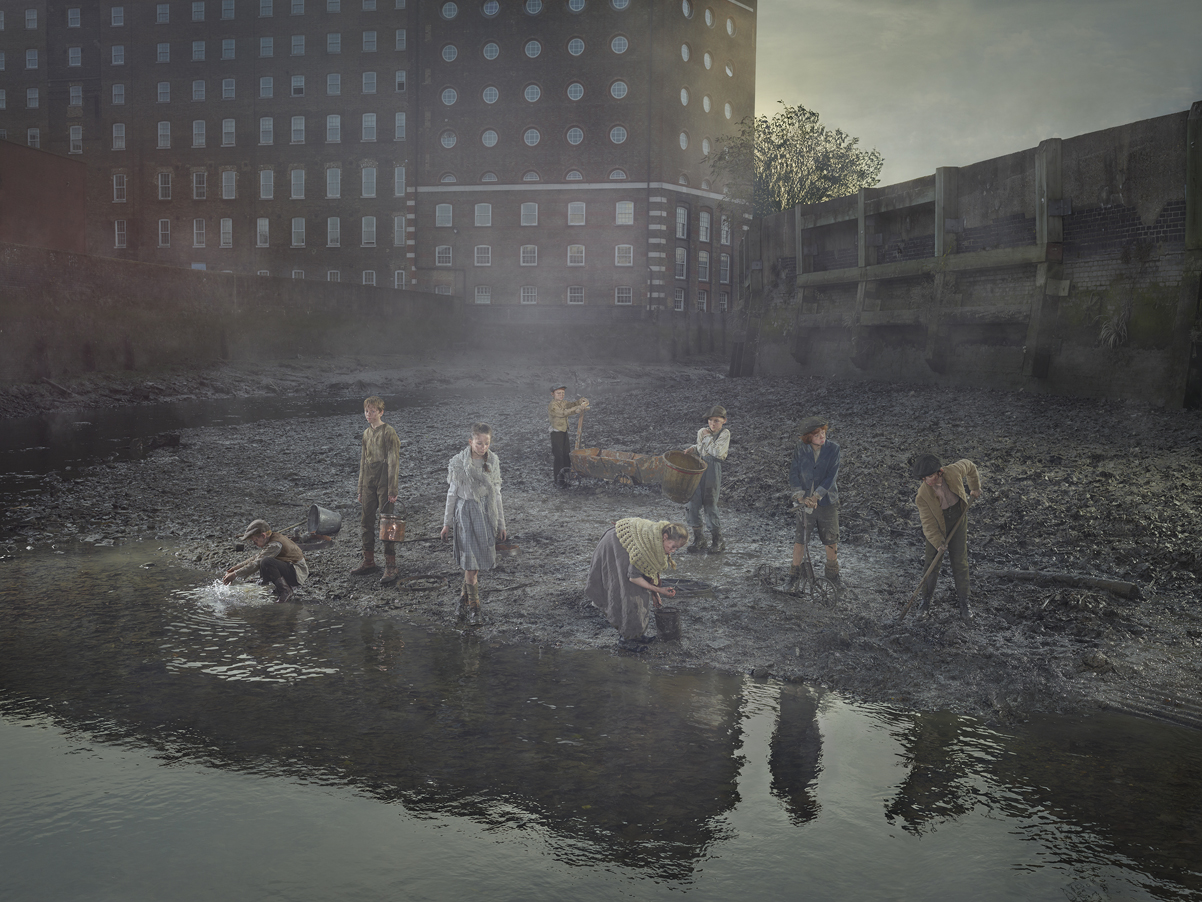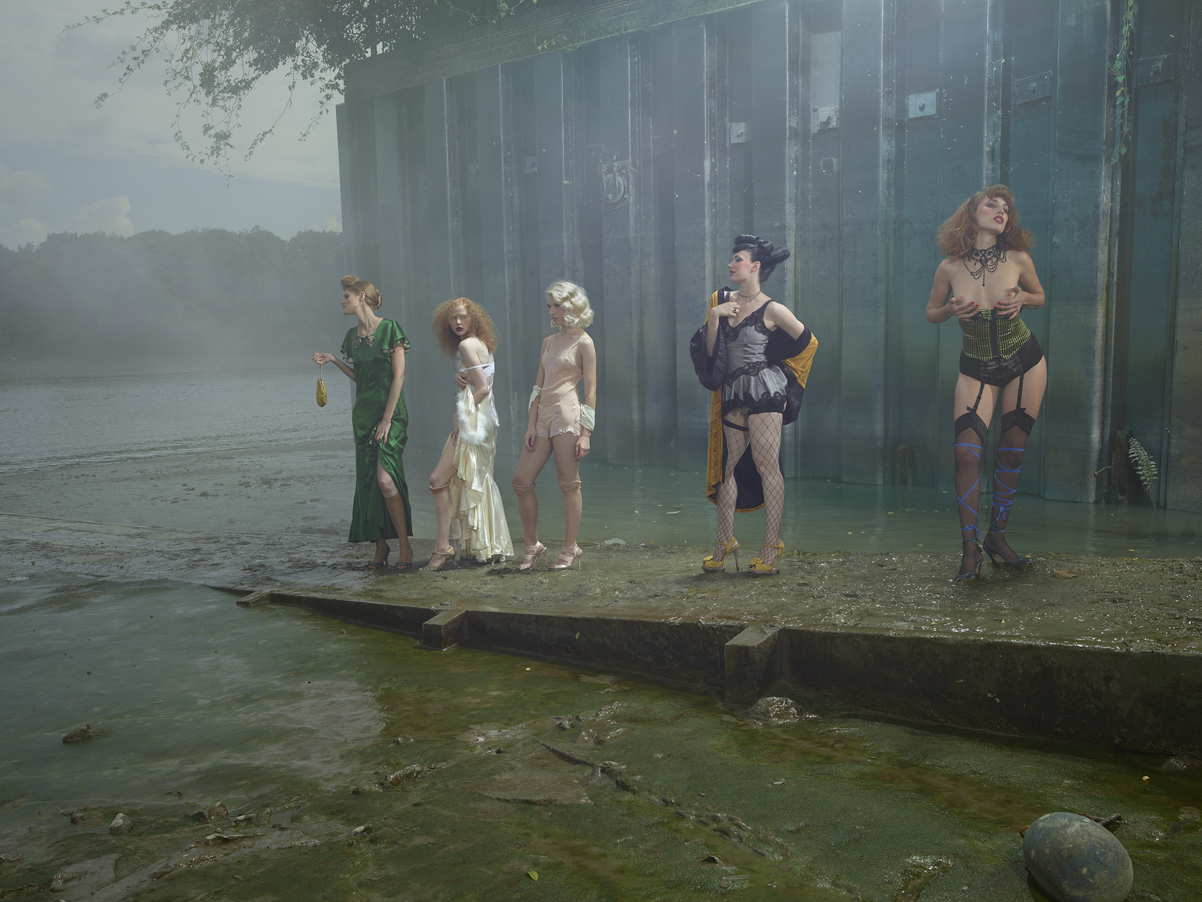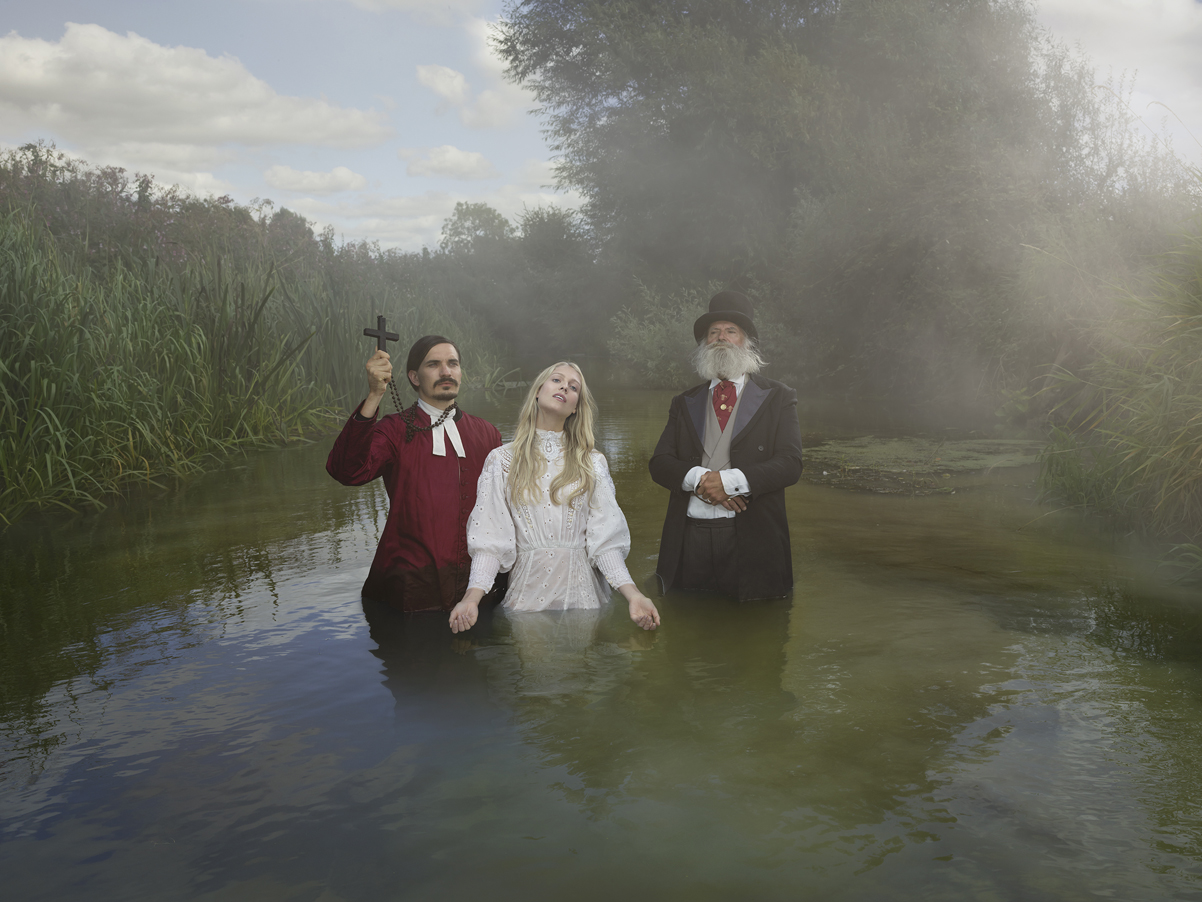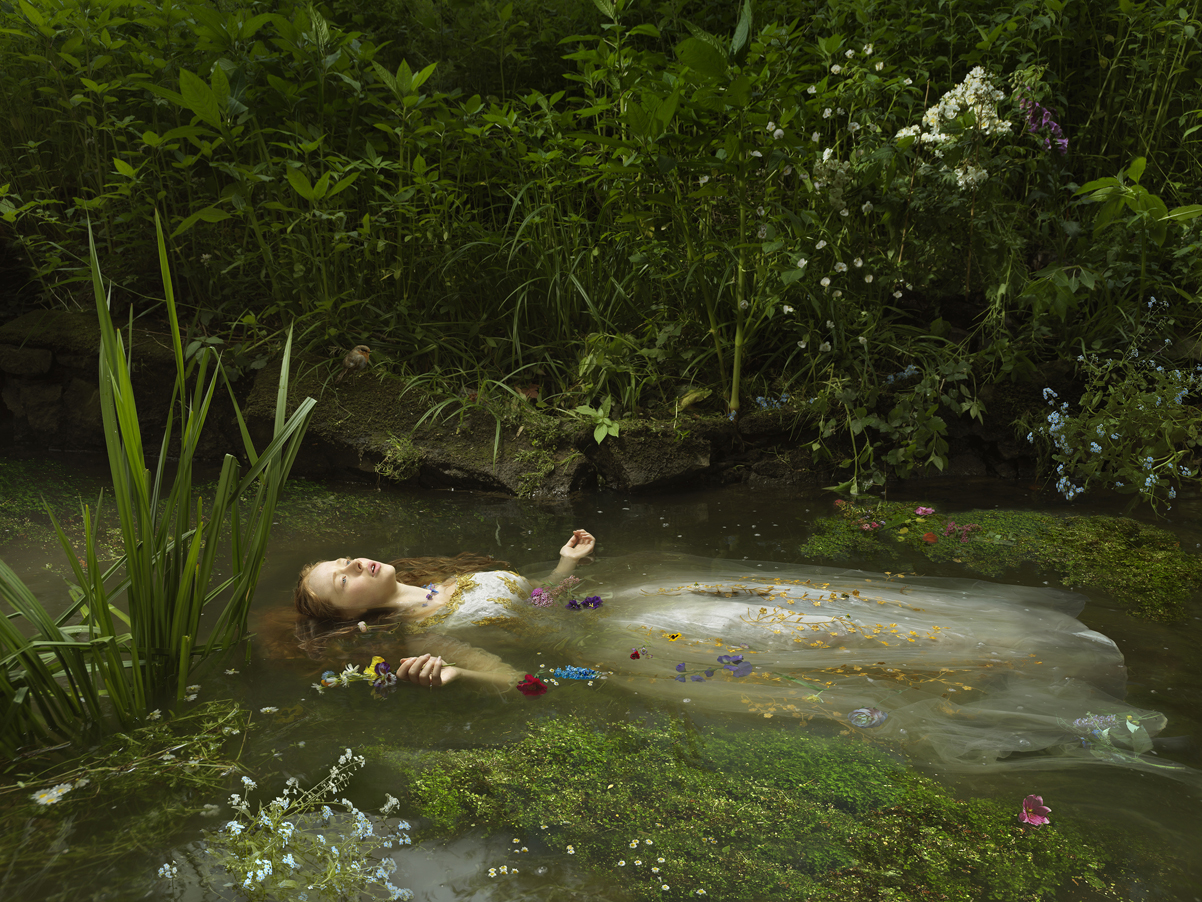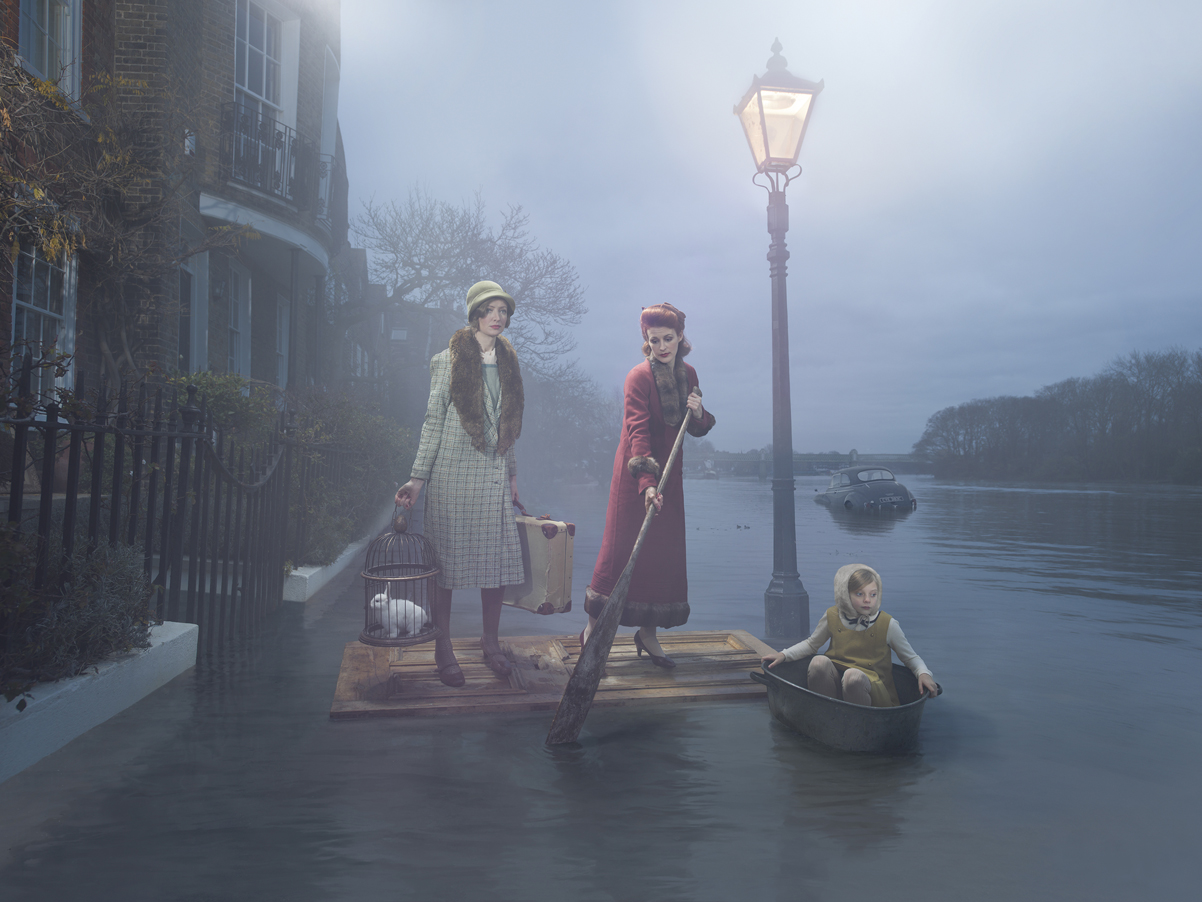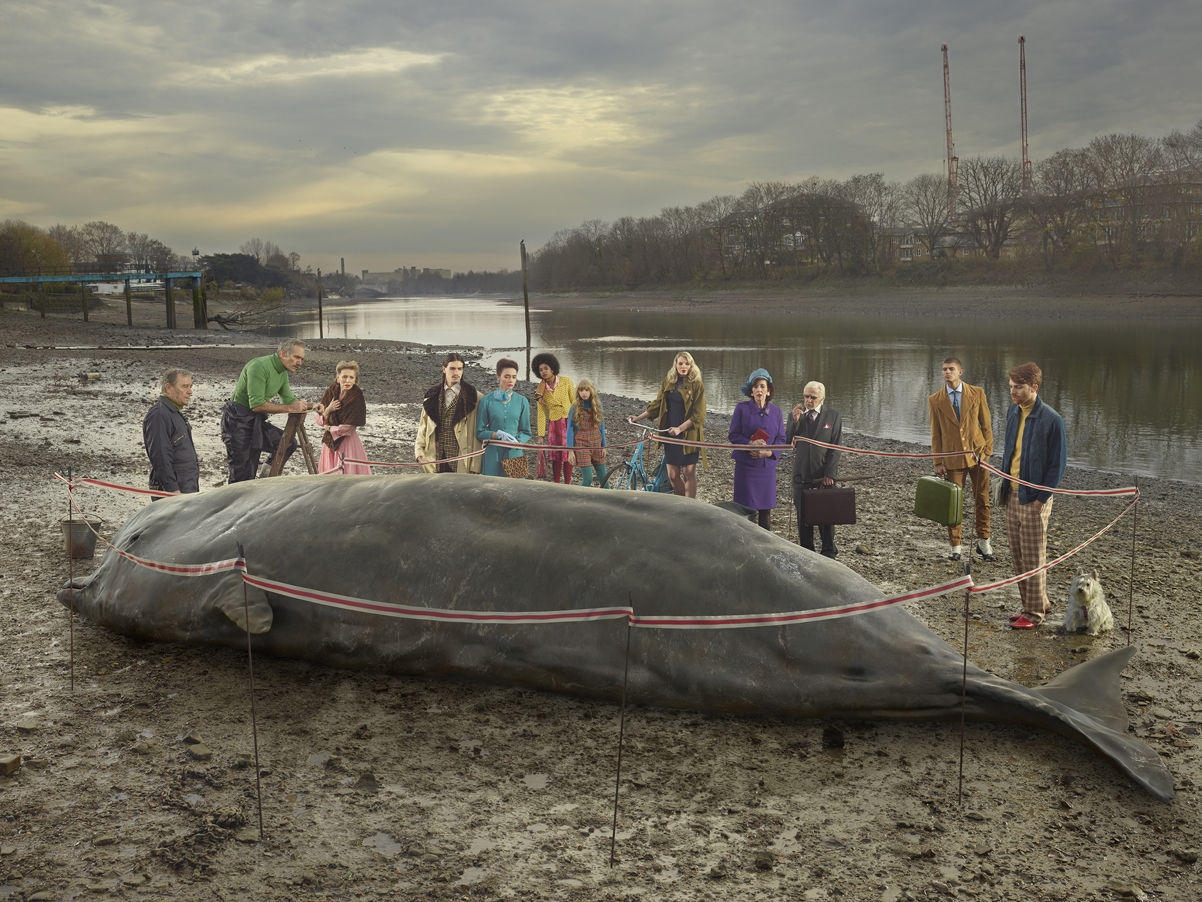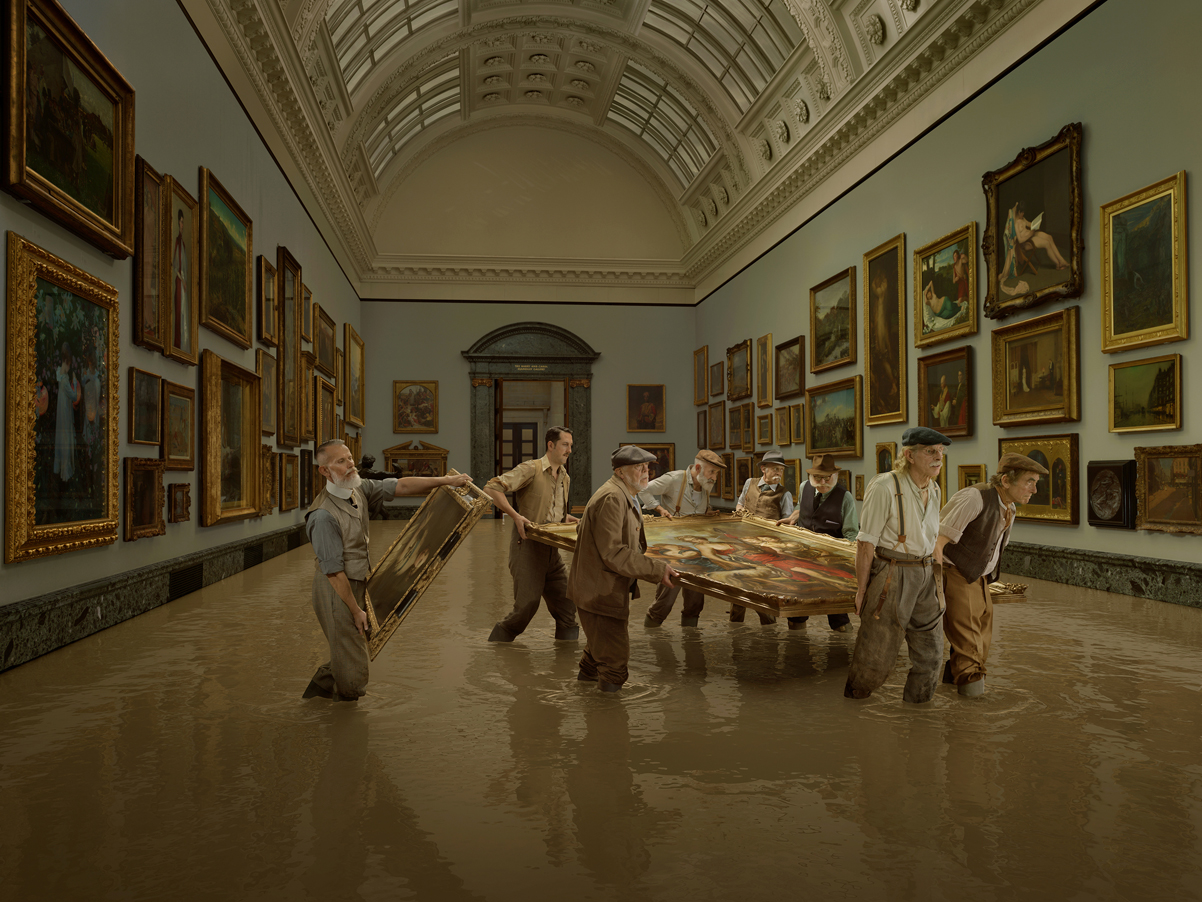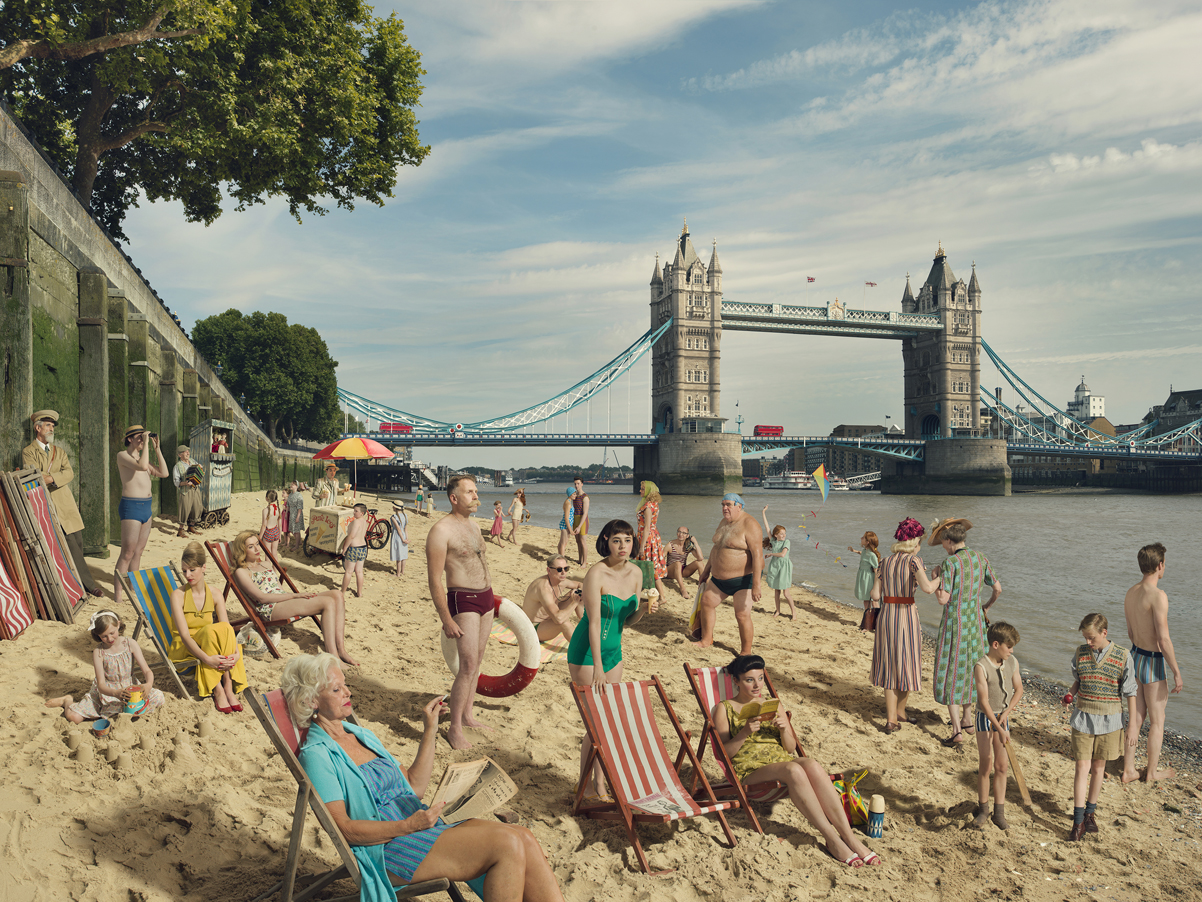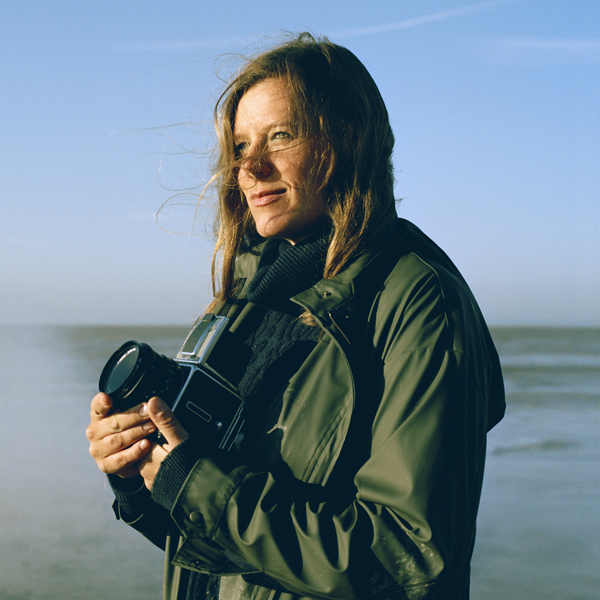“Seeing Julia Fullerton-Batten’s work is like experiencing time come to a pause. Each of her images capture cinema’s scale and sweep, funnelled to a singular defining moment and given depth by an obsession with perfect detail. Her work conveys the intimate truth of its subject, its essence. None more so than in her latest project, Old Father Thames, in which the German artist became so engrossed that she joined a rowing club to feel closer to the river’s ebb and flow. The pictures explore the history and spirit of London’s artery through real stories and events – kept alive, still, in the deep water and brought forth by Julia’s trusty Hasselblad camera, her unique creativity and a lot of painstaking preparation.” Loma-Ann Marks
The River Thames is not even the longest river in the British Isles and a mere pygmy in comparison with many other rivers in the world, yet its significance to British and world history is immense. The river starts as a small trickle in hills to the north west of London and travels for nearly 450 km through the south of England, the centre of London and thence out into the North Sea via the Thames estuary, passing some of England’s most picturesque towns and villages on its way.
London is one of the major cities of the world today, but it would not have existed if it were not for the River Thames passing through it. Just before the Thames reaches London it becomes tidal and formed a natural harbour such that London has been a port since pre-Roman times. Still today, the Thames acts as an artery of communication and trade route between Britain and the rest of the world.
As a teenager I moved from Germany to live in Oxford on the banks of the River Thames, though the stretch of the river there is called Isis, and the Thames has been a fascination for me ever since. I now live in West London but am still just a short walk from the river. Its constantly changing face with the tide and the seasons, the activities on and around the river are for me compulsive viewing and inspiration. But above all there is the history of the Thames along its entire length with an infinite variety of stories that encompass birth, baptism, death, flooding, sun-bathing on the shore, the story of the ‘Ladies Bridge’, messages in a bottle, riverside scavenging youngsters, prostitution, damaged masterpieces, ‘Ophelia’, and countless other whimsical, idiosyncratic and tragic happenings.
I am not alone in my admiration of the glories of the river. Notably, it has been an inspiration to many painters. In fact, there are more paintings of the River Thames than I had ever imagined could be possible. Monet painted the river repeatedly. Turner too captured the working river even revealing theearly nineteenth century fumes and smoke from the city’s factories and river traffic. Whistler was yet another. In the 1860s and 70s he was drawn to paint the bustling and rapidly changing urban neighbourhoods close to the river. But when one views all these works, it is not at all difficult to understand why they all found it such an attractive, potent subject matter.
My own fascination with the Thames has now taken a more concrete form. I have made it into a project and in the process of choosing, investigating and photographing a selection of cultural and historical narratives from along its banks. The result to-date is the unfinished work in progress – Old Father Thames.
Fullerton-Batten was born in Bremen, Germany. Her early life was spent in Germany and the USA, but after her parent’s divorce she and her siblings moved to the UK. There she completed her secondary education, then studied photography at college. Subsequently she assisted professional photographers for five years before a first commercial assignment kick-started her career in 1995, and first gained recognition as a fine-art photographer in2005.
Julia’s use of unusual locations, highly creative settings, street-cast models, accented with cinematic lighting are hallmarks of her very distinctive style of photography. She insinuates visual tensions in her images, and imbues them with a hint of mystery, which combine to tease the viewer to re-examine the picture, each time seeing more content and finding a deeper meaning. These distinctive qualities have established enthusiasts for her work worldwide and at all ends of the cultural spectrum, from casual viewers to connoisseurs of fine-art photography.
Fullerton-Batten has won countless awards for both her commercial and fine-art work, and is a Hasselblad Ambassador. She was commissioned by The National Portrait Gallery in London to shoot portraits of leading people in the UK National Health Service. These are now held there in a permanent collection. Other images are also in permanent collection at the Musee de l’Elysee, Lausanne, Switzerland. She is widely interviewed about her projects by professional photographic magazines from around the world and is sought after as a speaker at international events and as a judge for prestigious international photographic competitions.
all images © Julia Fullerton-Batten FRPS

